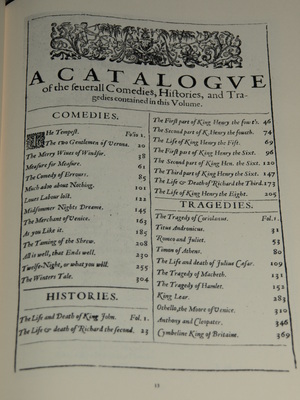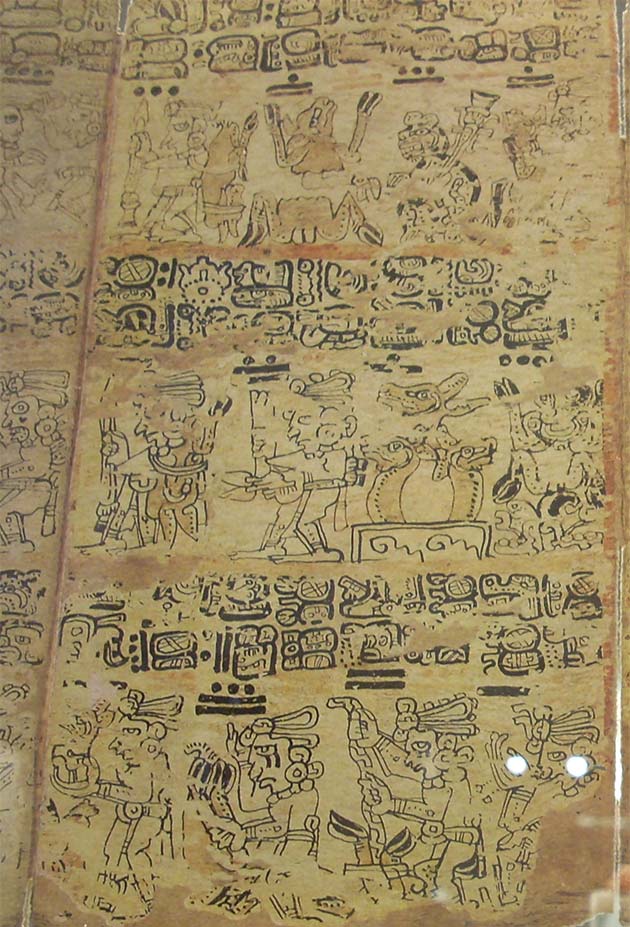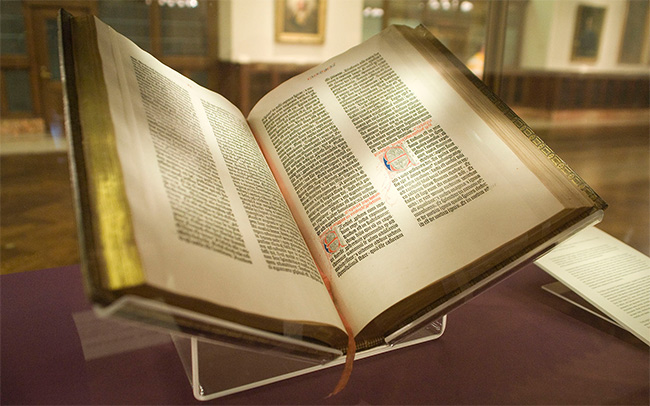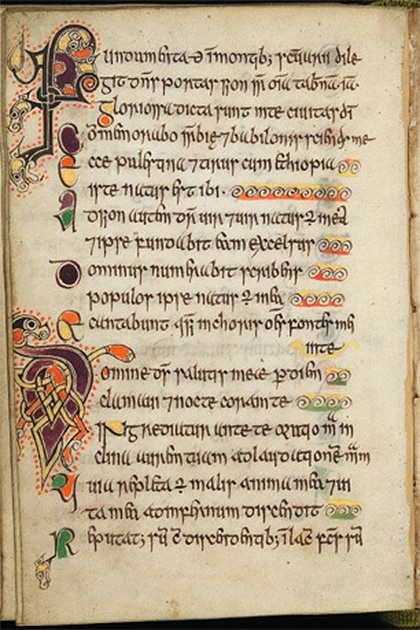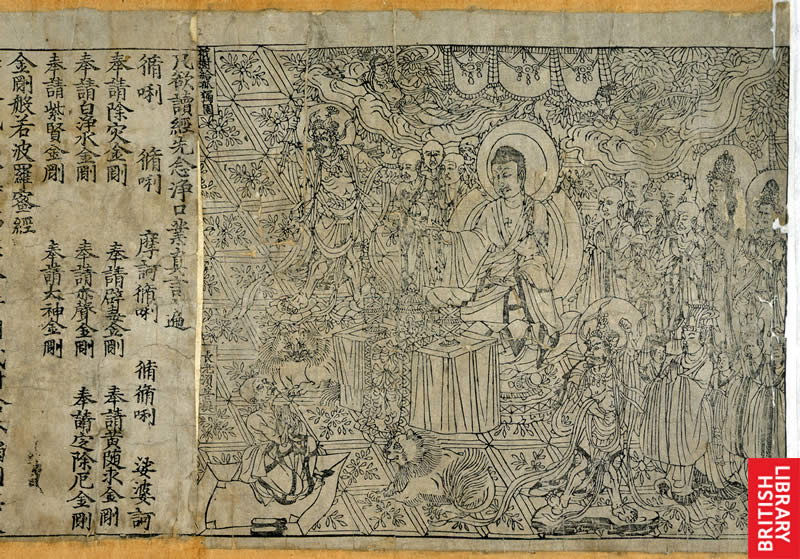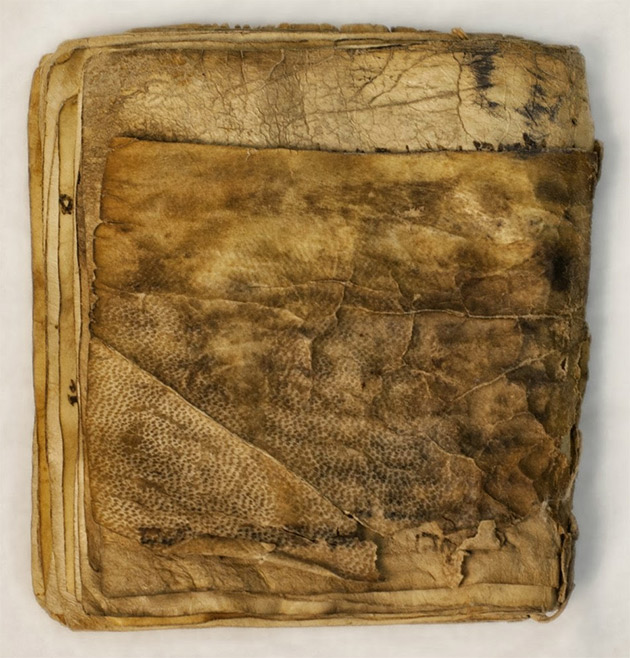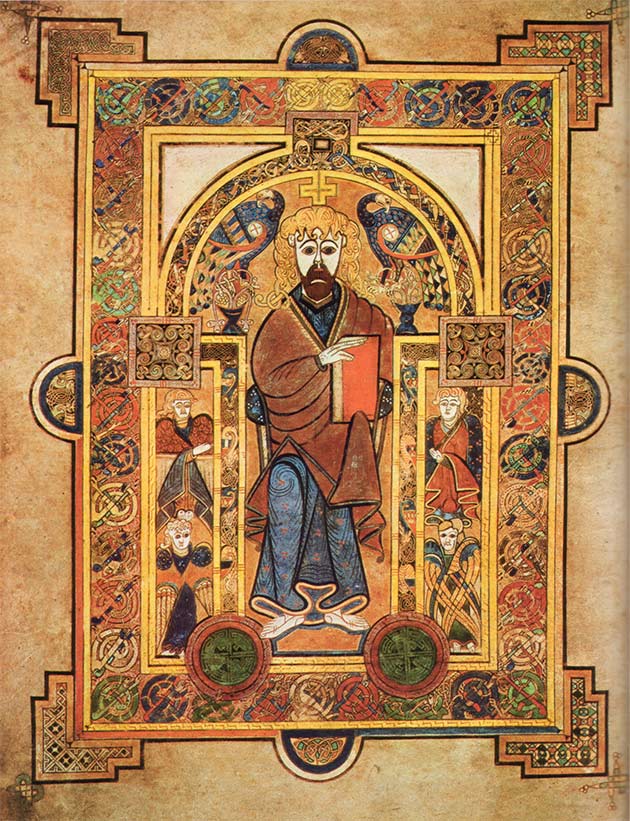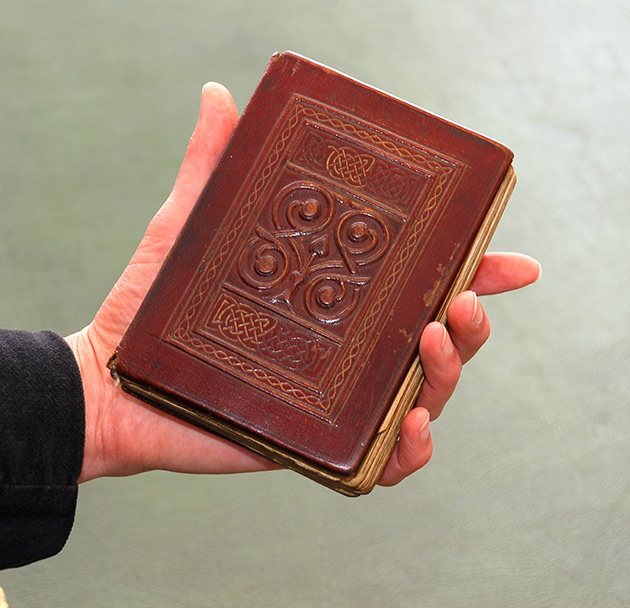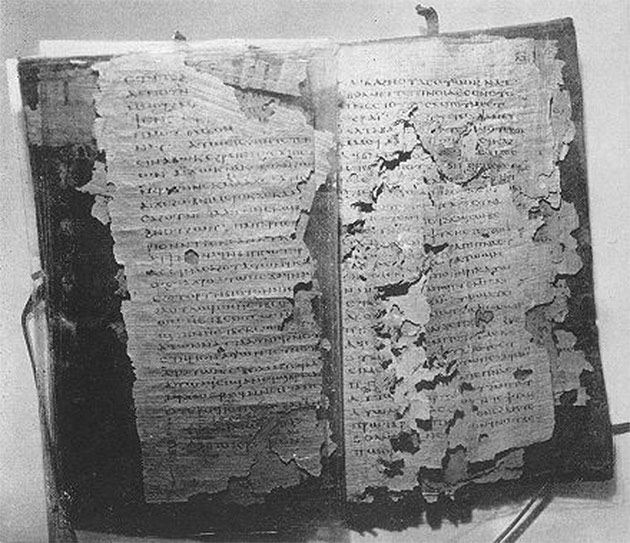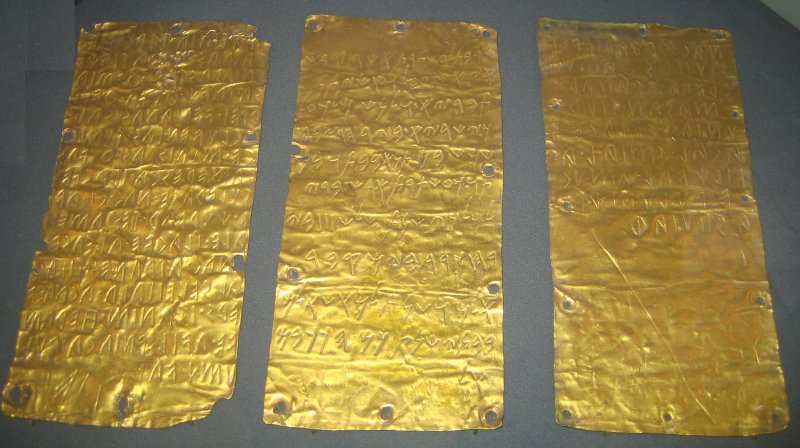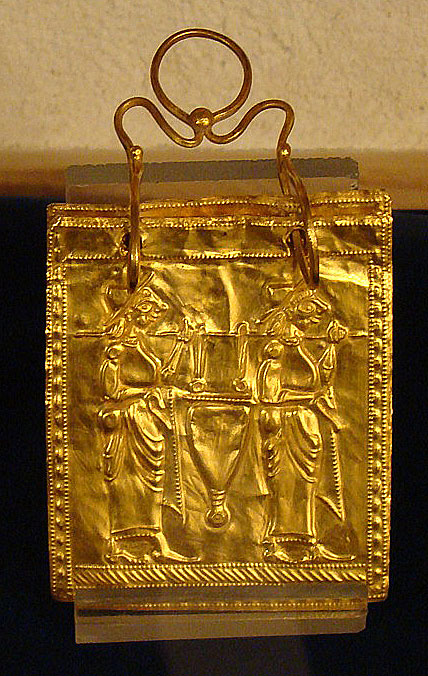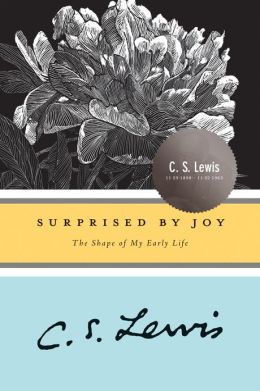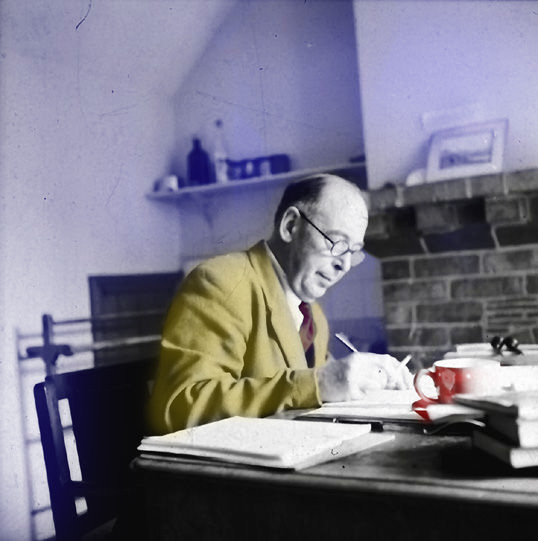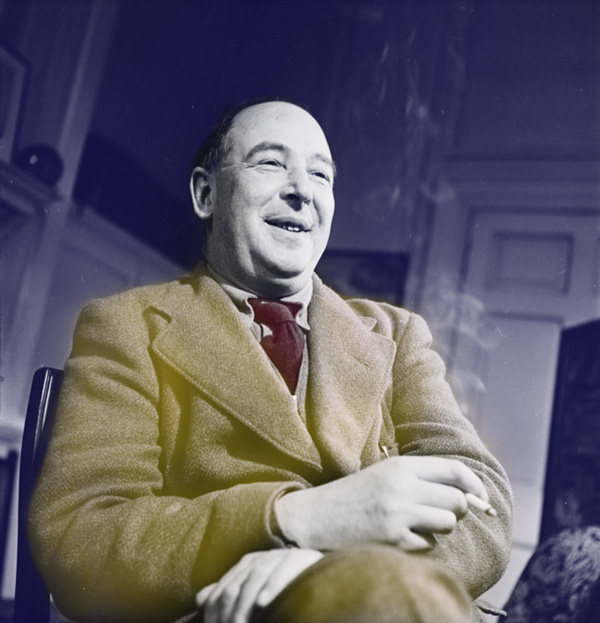With news this week of the discovery of what could be the earliest known siddur, a Jewish prayer book dated at around 840 AD – we have put together a list of 10 of the oldest known surviving books in the world today.
Writing and literature are thought to have been first developed between the 7th and 4th millenium BC. Since the dawn of writing an incredible array of different materials have been used for recording text, including clay, silk, pottery, papyrus, even coffins – so the question of the oldest surviving book depends very much on how you classify one.
The Mirriam-Webster Dictionary defines a book as: a set of printed sheets of paper that are held together inside a cover; a long written work. This definition rules out clay tablets, scrolls and similar, though many scholars have expanded the definition to include any significant piece of writing bound together inside a cover.
The question can also touch on the nature of the book. Some scholars have considered that a significant book should contain aworldview, setting it apart from mere accounting or administrative records.
We have tried to pull together what we hope is an interesting range of some of the oldest surviving books in the world. We cover everything from the earliest surviving printed books, to the oldest known surviving book in existence.
Madrid Codex
Discovered in Spain in the 1860s, the Madrid Codex – also known as the Tro-Cortesianus Codex – is one of the only surviving books attributable to the pre-Columbian Maya culture of around 900–1521 AD.
Most likely produced in Yucatán, the book is written in Yucatecan, a group of Mayan languages which includes Yucatec, Itza, Lacandon and Mopan.
Experts disagree on the exact date the Madrid Codex was created, though it is said by some to have been made before the Spanish conquest of the 16th century.
The book is currently held in the Museo de América in Madrid, Spain.
Estimated age: 494 years old.
Gutenberg Bible
The Gutenberg Bible, also known as the 42-line Bible, is listed by the Guinness Book of World records as the world’s oldest mechanically printed book – the first copies of which were printed in 1454-1455 AD.
Printed by Johannes Gutenberg, in Mainz, Germany, it is considered to be oldest printed book using movable type in the West – though in China there were examples of book printing many centuries earlier, such as the
Diamond Sūtra.
There are 48 original copies in known existence, of which 21 are complete. The above image is of the New York Public Library’s copy, the first to come to the USA.
Estimated age: 559 years old.
Celtic Psalter
The Celtic Psalter is described as Scotland’s
Book of Kells. The pocket-sized book of Psalms is housed at the University of Edinburgh, where it went on public display in 2009 for the first time.
The book is thought to be have been created in the 11th century AD, making it Scotland’s oldest surviving book.
Estimated age: 938 years old.
Diamond Sūtra
A Buddhist holy text, the Diamond Sūtra is considered to be the oldest surviving dated printed book in the world.
Found in a walled up cave in China along with other printed materials, the book is made up of Chinese characters printed on a scroll of grey printed paper, wrapped along a wooden pole.
The book was copied by a man called Wong Jei, in May 868 AD, on the instruction of his parents, which is noted at the end of the text.
Estimated age: 1,145 years old.
Siddur, Jewish Prayer Book
Discovered in 2013, the third major discovery this year, was a ‘siddur’ – a Jewish prayer book dated back to around 840 AD.
The complete parchment, still in its original binding, is so old that it contains Babylonian vowel pointing – akin to the Old or Middle English for the English language.
This allowed experts to date the book to the times of Geonim – Babylonian & Talmudic leaders during the Middle ages.
Estimated age: 1,173 years old.
Book of Kells
The Book of Kells is kept in the Trinity College Library in Dublin, Ireland, and is thought to have been created by Celtic monks around 800 AD.
The book is an incredibly ornate illuminated manuscript Gospel book, written in Latin, containing the four Gospels of the New Testament.
Estimated age: 1,213 years old.
St Cuthbert Gospel
Europe’s oldest known surviving intact book is the St Cuthbert Gospel, bought by the British Library in 2012 for £9 million pounds as part of a fundraising campaign.
The book was buried with St Cuthbert, an early British Christian leader, on the island of Lindisfarne off Northumberland, in around 698 AD.
Only just surviving the Vikings conquests, the book was moved to Durham to avoid Viking raiders, narrowly escaping destruction.
The book was again rediscovered in 1104 AD, with an inscription added to the inside cover (see image below).
You can now view the a digitised version on the book on the British Library
website.
Estimated age: 1,315 years old.
Nag Hammadi Library
Considered to be some of the oldest surviving bound books – 13 leather bound papyrus codices were discovered in 1945 buried inside a sealed jar, by a local man in the town of Nag Hammadi in Upper Egypt.
The books, containing Gnostic texts, are dated from around the first half of the 4th century AD. Written in the Coptic language, the codices are thought to have been copied from Greek.
The Nag Hammadi codices are currently found at the Coptic Museum in Cairo, Egypt.
Estimated age: 1,693 years old.
Pyrgi Gold Tablets
Found in 1964 in the excavation of a sanctuary in ancient Pyrgi, Italy, the three gold plates date back to 500 BC.
Containing holes around the edges, scholars think they were once bound together.
Two are written in Etruscan text, with one written in Phoenician – comprising of a dedication from King Thefarie Velianas to the Phoenician goddess Astarte.
The plates are now displayed at the National Etruscan Museum in Rome, Italy.
Estimated age: 2,513 years old.
Etruscan Gold Book
Thought to be the oldest multi-page book in the world, dating to about 660 BC, the Etruscan Gold Book was discovered 70 years ago whilst digging a canal off the Strouma river in Bulgaria.
The book is made from 6 sheets of 24 carat gold, bound together with rings.
The plates are written in Etruscan characters, and also depicted is a horse, horseman, a Siren, a lyre, and soldiers.
The book was donated to Bulgaria’s National History Museum in Sofia, by an anonymous 87 year old donor.
Etruscans were an ancient race of people that migrated from Lydia – in now what would be modern Turkey – settling in central Italy nearly 3 thousand years ago.
Estimated age: 2,673 years old.


 20 Comments
20 Comments